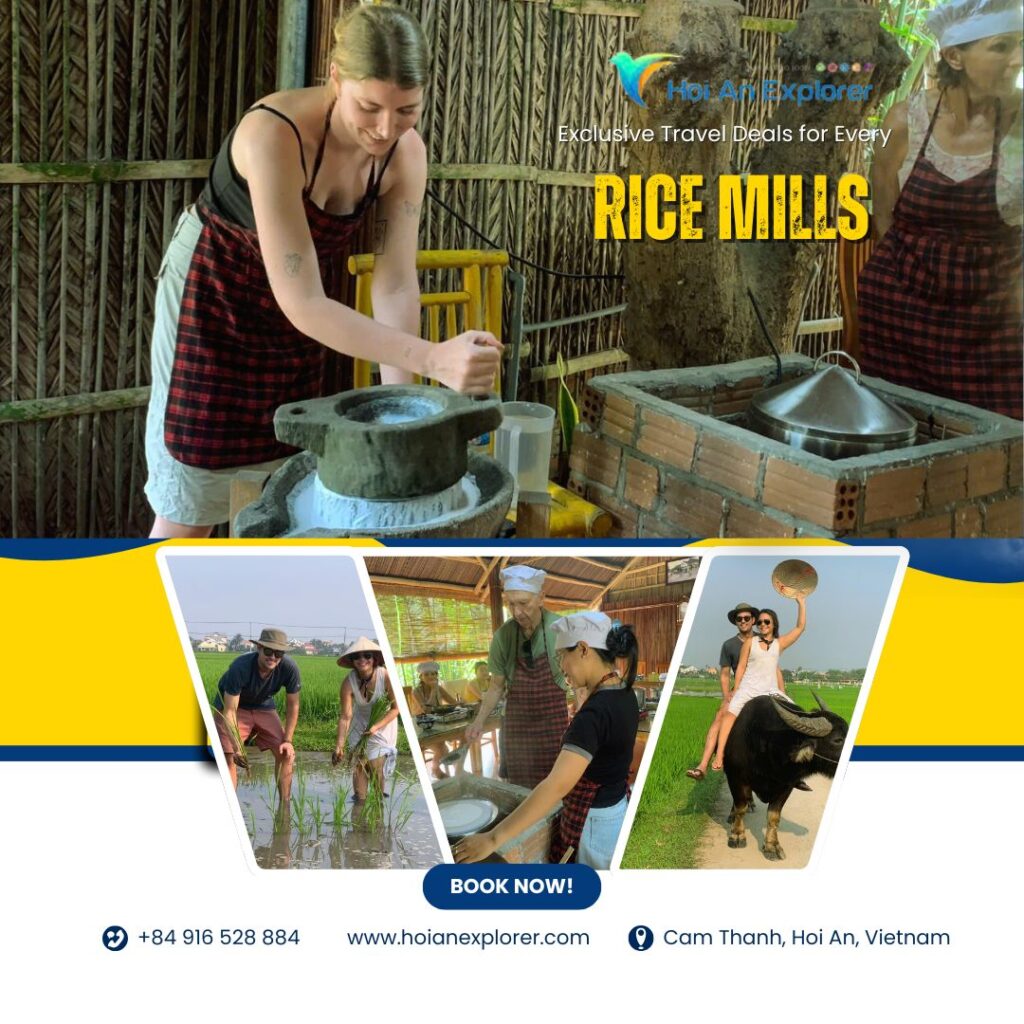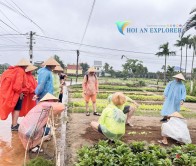Traditional Rice Mills – Traditional Tool In Vietnamese Agricultural Culture
Coming to Hoi An, visitors have the opportunity to participate in the unique culinary experiences of Quang Nam. Visitors will experience rustic dishes, but extremely delicious and nutritious. The dishes are mostly made from rice, very good for health and easy to digest. This contributes to increasing the meaning of your trip.
For any further information about Hoi An Explorer, please get in touch with the hotline at 0905.223.343 (Ms Tina)
See more details >>> Wet Rice Growing – Riding Buffalo And Plowing Farm At Cam Thanh

Traditional rice mills Hoi An Cooking class
The dishes you will experience are banh xeo, Quang noodles… These are dishes made entirely from natural rice ingredients. You will learn how to grind rice into flour using a stone mortar for your Hoi An cooking class.
You can learn more about the process of how to get pure white rice grains through the wet rice planting tour:
Let’s learn about the interesting meaning of the stone mortar for grinding rice flour.
The rice mill is a vital traditional tool in Vietnamese agricultural culture. The history of rice mills can be understood through the development of rice production and processing tools in the lives of Vietnamese people.
1. History and role of rice mills
Rice mills have existed for a long time in Vietnamese society, since the early agricultural period. Rice is the staple food of Vietnamese people, and processing rice into flour or starch is a necessary task in daily life. Rice mills help people make products such as rice flour, ground rice to make traditional dishes such as banh chung, banh day, banh cuon, or to cook porridge.
2. Traditional rice mills
The tradition of rice mills in Vietnam is very rich. Traditional rice mills are mainly made of stone or wood. Popular types of rice mills include:
- Stone mills: Made from solid stone, round, thick, and heavy. Traditional stone mortars are often used to grind rice and grains into fine powder. Stone mortars can maintain their sharpness for a long time and are very effective at grinding.
- Wooden mortars: Wooden mortars are often made from wood from hard trees such as ironwood or rosewood. Wooden mortars are lighter than stone mortars but are also very durable. They are often used in households or craft villages to grind rice and make flour.
3. Development process
In recent decades, the development of modern machinery and technology has gradually replaced traditional flour mills. Industrial rice and flour mills are increasingly popular in production facilities and food processing plants. However, manual rice mills still retain their value in some rural areas, especially during festivals, special occasions or when making traditional dishes.
4. Rice flour mills in Vietnamese culture
Rice flour mills are not only a tool for daily life but also have profound cultural value. Rice mills often appear in traditional customs and rituals, demonstrating the people’s attachment to wet rice agriculture. The mill is also a symbolic image of the diligence and perseverance of Vietnamese farmers. In short, the Vietnamese rice mill is an indispensable part of the history and life of the Vietnamese people. Although there are great changes in technology today, the value of the rice mill is still preserved and promoted in many aspects of Vietnamese culture




